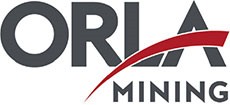Mineral resource and mineral reserve estimates are key factors considered in determining whether technical feasibility and commercial viability of extracting a mineral resource are demonstrable which influences the classification of expenditure,
The carrying value of assets may be affected due to changes in estimated mineral reserves and resources if the change is considered an indicator of impairment,
Depreciation of producing mineral properties is affected by changes in reserve estimates,
Site closure provisions may change where reserve estimate changes affect expectations about when such activities will occur and the associated cost of these activities.
The mineral resource and mineral reserve estimates are based on information compiled by qualified persons within the meaning of Canadian National Instrument 43-101 Standards of Disclosure for Mineral Projects (“NI 43-101”). Such information includes geological and technical data on the size, depth, shape and grade of the ore body and suitable production techniques and recovery rates. Such an analysis requires complex geological judgements to interpret the data. The estimation of recoverable reserves is based upon factors such as estimates of foreign exchange rates, commodity prices, future capital requirements and production costs, along with geological assumptions and judgements made in estimating the size and grade of the ore body
As the economic assumptions used may change and as additional geological information is produced during the operation of a mine, estimates of mineral resources and mineral reserves may change.
| (ii) | Valuation of production inventory |
The measurement of inventory, including the determination of its NRV, especially as it relates to metal production inventory involves the use of estimates.
NRV is calculated as the estimated price at the time of sale based on prevailing metal prices, less estimated future production costs to convert the inventory into saleable form and associated selling costs, discounted where applicable. In determining the value of metal on the leach pads, we make estimates of rock densities, tonnages, grades, and the recoverability of ore stacked on leach pads to estimate its value. Changes in these estimates can result in a change in carrying amounts of inventory, which could result in charges to cost of sales. The determination of forecast sales prices, recovery rates, grade, assumed contained metal in stockpiles, work-in-process and leach pad inventory and production and selling costs all requires significant assumptions that impact the carrying value of production inventories.
| (iii) | Asset retirement and site closure obligations |
We make estimates and assumptions in determining the provisions for asset retirement and site closure. The estimates and assumptions include determining the amount and timing of future cash flows, inflation rates, and discount rates. The ultimate rehabilitation costs are uncertain, and cost estimates can vary in response to many factors, including judgements of the extent of rehabilitation activities, technological changes, and regulatory changes. Consequently, there could be significant adjustments to the provisions established, which would affect future financial position, results of operations, and changes in financial position. The provision is management’s best estimate of the present value of the future asset retirement and site closure obligation. Actual future expenditures may differ from the amounts currently provided.
| (iv) | Fair value measurement |
Management uses valuation techniques in measuring the fair value of share options granted and restricted share units, deferred share units, and bonus shares awarded. Such valuation techniques are also used for estimating the fair value upon initial recognition of the purchase price allocated to the assets and liabilities of South Railroad and Lewis.
We determine the fair value of share-based payments awarded using the Black Scholes option pricing model which requires us to make certain estimates, judgements, and assumptions in relation to the expected life of the share options, expected volatility, expected risk‐free rate, and expected forfeiture rate. Changes to these assumptions could have a material impact on the Company’s financial statements.
